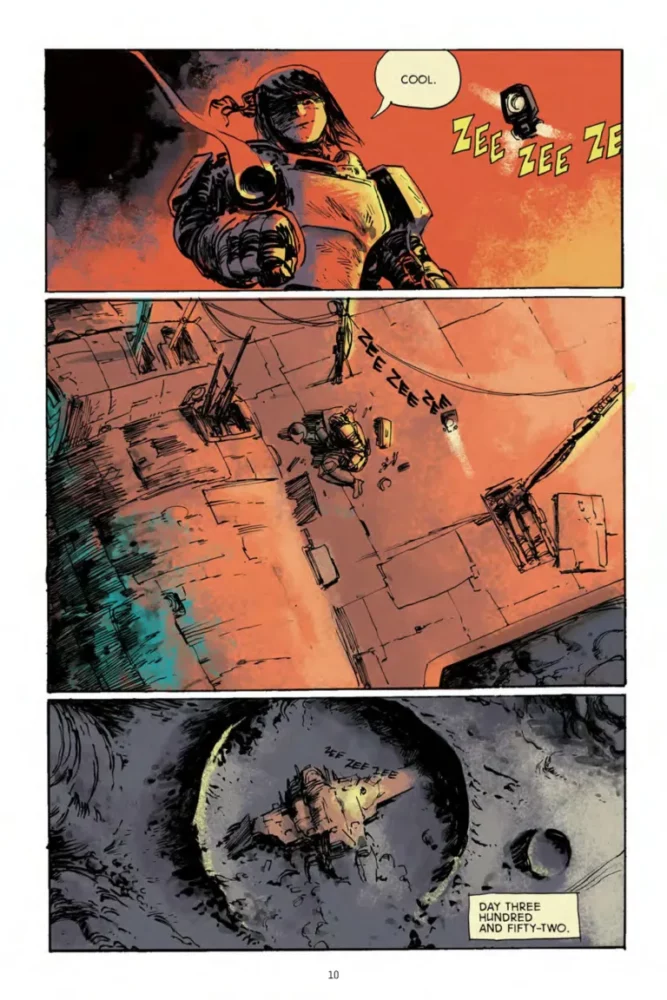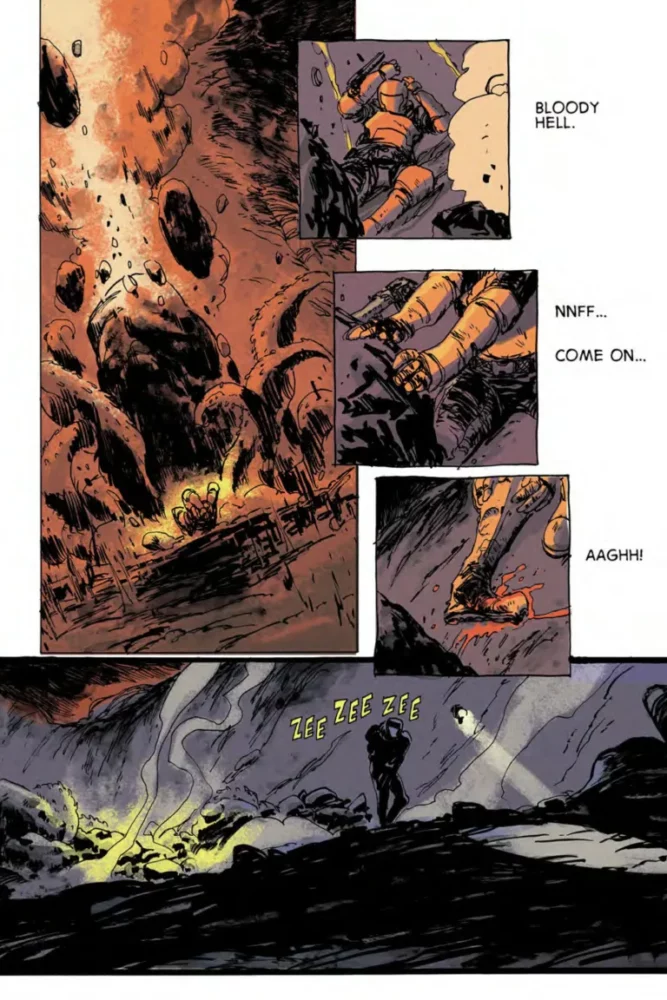Space is scary. An endless void stretching out in all directions, enveloping all known life. It’s the darker side of stories about man searching the stars. For as much as it could be seen as the final frontier, an exciting new search, anything that could be found in space will be dwarfed by so, so much nothing. DEGA by Dan McDaid combines the loneliness of space with an equally abstract, frightening aberration. One that slowly kills whoever comes into contact with it.

An astronaut finds herself stranded on an alien planet after a crash. Normally, that would be bad enough. But there’s a strange anomaly among the stars that’s eating away at her, bit by bit. So without enough time to fix her ship, she’ll have to search the desolate planet surface for salvation.
The struggle of DEGA‘s protagonist is one against the mysterious, corrupting influence of an alien world. But by the time the story starts, the nameless astronaut has already been stranded for three hundred and fifty-two days. So less a race and more the tail-end of a marathon. It’s a desperate, exhausted book that leaves the reader to make sense of all the sci-fi high concepts from the internal ramblings of the main character. As the book proceeds, even color fades away, with only a few important objects getting splashes of pigment. Like the red grass that springs beneath the feet of alien “magpies.” Or the color of the sky right before the astronaut’s dragged underground. It’s all about getting in the headspace of someone facing a gnawing, existential threat.

McDaid adopts a loose, thick-lined style for the book that slathers every page in black ink. Characters’ features can easily become obscured by shadow, sometimes a single eye sufficing to get across an emotion. But each page still manages to be incredibly dense, no background spared as alien rocks and rubble loom over the characters in every panel. In the afterword, McDaid mentions that one of his original goals with the book was to make it as fast as possible. He aimed for a month. It took five years. It’s in his combination of sketchy, implied forms with detailed alien landscapes and, well, a whole lot of those implied forms that it becomes clear how work on this project could balloon to such length. But it works in favor of establishing the hazy yet overwhelming setting of the story.
The colors rarely stay inside the lines, adopting a speckled, airbrushed look. It helps add to the loose, sketchy feeling. And while colors may mostly disappear partway through, a strong palette for the book gets set early on. This is a story of rust-orange and a cool blue-purple. Even when the book becomes black-and-white, the small touches of hue remain shades of those two colors. It starts out alien and unsettling, but when the colors pop back in, it feels like a relief from stark white. Though in a slight change from the original, self-published version of DEGA, a few more examples of color are added near the end, adapted from what was originally greyscale. It balances color throughout the book a bit better, and helps the last few pages hit harder.

The letters are the only other change from the original edition of DEGA. Though again, don’t expect anything major. An additional ellipses here, a few lines around an exasperated “huff” there. But they remain stark and simple, fitting the clipped, matter-of-fact tone of the astronaut’s narration (an attempt to keep herself level-headed through panic and exhaustion). The sound-effects, meanwhile, get large, overlapping bubble letters that help sell both the racket of an oncoming train and the repetitive drone of an excavation robot.
VERDICT
DEGA is a short, self-contained tone piece about an astronaut at the end of her rope. But for as dire as things may get, the ending still leaves a small, lingering sense of hope. Though part of the fun is getting to piece the narrative together yourself. It’s out today from Oni Press, so definitely check it out.

